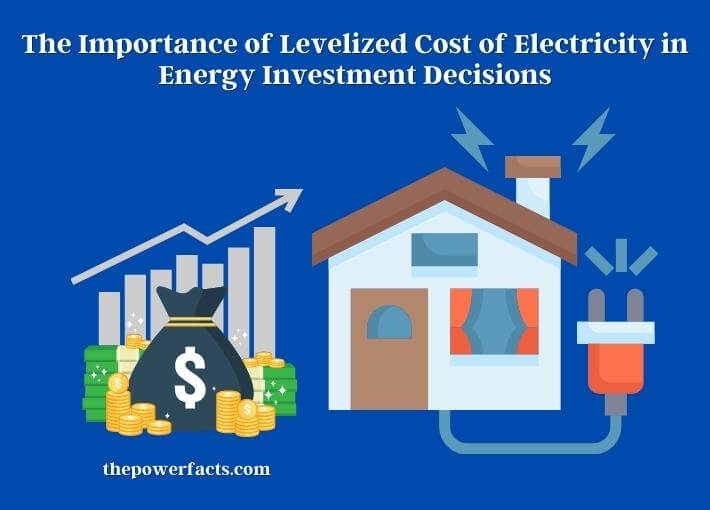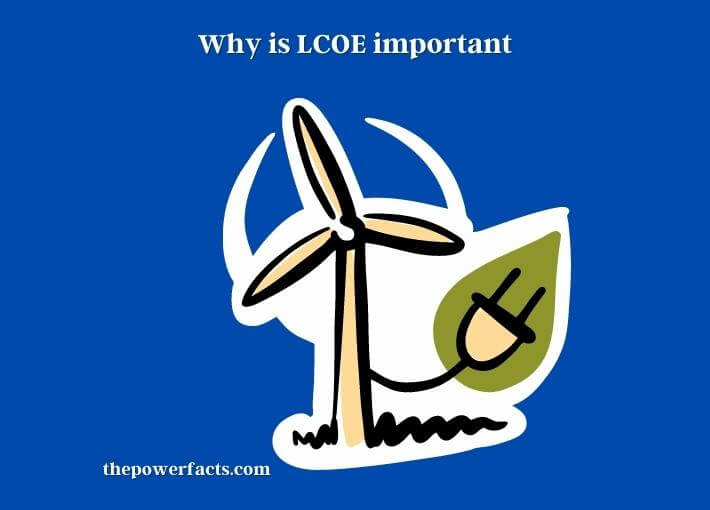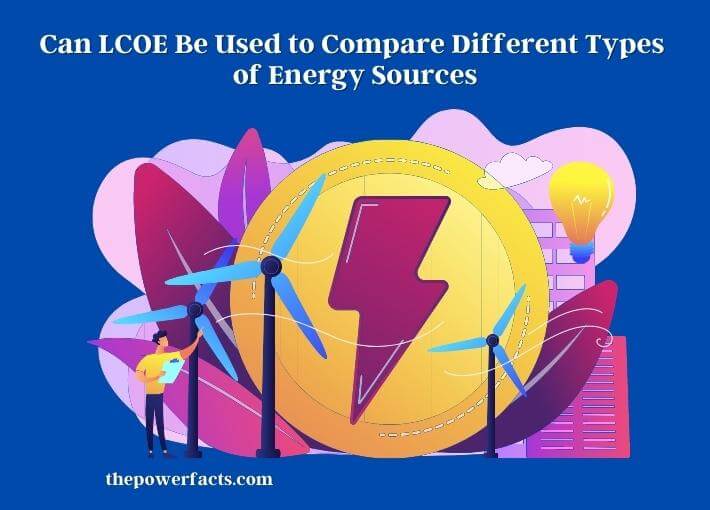Energy is one of the most important resources for modern society, and the demand for energy continues to grow. With the increasing demand for energy, there is a growing need for cost-effective energy sources. Levelized Cost of Electricity (LCOE) is a metric that provides a standardized way to compare the costs of different energy sources and predict future costs.

It is a crucial metric for energy investment decisions, as it allows investors to evaluate the cost-effectiveness of energy projects and determine which energy sources to invest in.
What is LCOE?
LCOE stands for Levelized Cost of Electricity, which is a metric used to calculate the cost of producing electricity from a particular source over its lifetime. It provides a standardized way to compare the costs of different energy sources and predict future costs.
LCOE takes into account the total cost of building, operating, and maintaining a power plant, as well as the total amount of electricity generated over its lifetime. By using LCOE, investors can evaluate the cost-effectiveness of different energy projects and determine which energy sources to invest in. Governments can also use LCOE to evaluate the costs and benefits of different energy policies and determine which policies are most cost-effective.
Why is LCOE important?
LCOE is a critical metric for energy investment decisions for several reasons:
Standardizes Cost Comparison
LCOE provides a standardized way to compare the costs of different energy sources. It considers all costs associated with producing electricity, including capital expenditures, operating costs, and fuel costs. This allows for an apples-to-apples comparison of different energy sources.

Predicts Future Costs
LCOE takes into account the entire lifetime of a power plant, including future maintenance and fuel costs. This allows for a more accurate prediction of the future costs of electricity generation from a particular source.
Evaluates Cost-effectiveness
LCOE is a useful tool for evaluating the cost-effectiveness of different energy sources. It considers the cost of producing electricity and the amount of electricity generated, which allows for a comparison of the cost per unit of electricity produced.
Identifies the Most Cost-effective Energy Sources
LCOE can help identify the most cost-effective energy sources. It considers the cost of producing electricity over the entire lifetime of a power plant, which can help identify the energy sources that provide the lowest cost per unit of electricity generated.
Factors that affect LCOE
Several factors can affect the LCOE of different energy sources. These include:
Capital Costs
Capital costs are the costs associated with building a power plant. They include the costs of equipment, labor, and materials. Higher capital costs can increase the LCOE.
Operating Costs
Operating costs are the costs associated with running a power plant. They include the costs of fuel, maintenance, and labor. Higher operating costs can increase the LCOE.
Capacity Factor
The capacity factor is the amount of time a power plant operates at its full capacity. A higher capacity factor can reduce the LCOE by increasing the amount of electricity generated over the lifetime of the power plant.
Fuel Costs
Fuel costs can have a significant impact on the LCOE of energy sources that use fossil fuels. Fluctuations in fuel prices can cause significant changes in the LCOE.
Applications of LCOE
LCOE has a wide range of applications in energy investment decisions. One of the most significant applications of LCOE is in comparing the costs of different energy sources. By calculating the LCOE of different energy sources, investors can determine which sources are the most cost-effective.
Another application of LCOE is in evaluating the cost-effectiveness of energy projects. LCOE can help investors determine whether a project will be profitable over its lifetime, taking into account the total costs and expected revenue. This information is essential for making informed investment decisions.
LCOE is also important for predicting future costs. By taking into account the lifetime costs of a power plant, LCOE can provide a reliable estimate of the cost of electricity production over the life of the plant. This information is useful for predicting future energy prices and planning future energy investments.
In addition to these applications, LCOE can inform policy decisions related to energy. Governments can use LCOE to evaluate the costs and benefits of different energy policies and determine which policies are most cost-effective. This information can help policymakers make informed decisions about energy policy and ensure that energy is produced and consumed in a cost-effective and sustainable way.
If you want to finance your solar energy project, See here for a details explanation.
What is the Difference Between LCOE and the Total Cost of Ownership?
| LCOE | Total Cost of Ownership |
| A metric used to calculate the cost of producing electricity from a particular source over its lifetime | The total cost of owning and operating a power plant over its lifetime |
| Calculated by dividing the total cost of building, operating, and maintaining a power plant over its lifetime by the total amount of electricity generated over the same period | Includes the initial capital cost, maintenance costs, and operating costs |
| Useful for comparing the cost-effectiveness of different energy sources and predicting future costs | Provides a more comprehensive view of the costs of a power plant |
| Can inform energy investment decisions by allowing investors to evaluate the cost-effectiveness of energy projects and determine which energy sources to invest in | Can be used to determine the profitability of a power plant over its lifetime |
| A standardized metric that allows for easy comparison of different energy sources | Can vary widely depending on the type of energy source and the specific project |
Can LCOE Be Used to Compare Different Types of Energy Sources?
LCOE is a useful tool for comparing the costs of different types of energy sources. This metric allows investors to evaluate the cost-effectiveness of different energy projects and determine which sources to invest in. By calculating the LCOE of different sources, investors can estimate the levelized cost of electricity produced from each source over its lifetime.

The LCOE metric takes into account the total cost of building, operating, and maintaining a power plant over its lifetime and divides it by the total amount of electricity generated over the same period. This calculation allows investors to estimate the cost per unit of electricity produced from each source.
It’s important to note that LCOE is just one metric, and it may not provide a complete picture of the costs associated with different energy sources. Other factors, such as the environmental impact of each source and the availability of resources, should also be considered when making investment decisions.
The LCOE can vary widely depending on the specific project and the type of energy source being evaluated. For example, renewable energy sources such as solar and wind power may have a higher initial capital cost, but lower operating and maintenance costs, resulting in a lower LCOE over time. On the other hand, fossil fuel-based energy sources may have lower initial capital costs but higher operating and maintenance costs, resulting in a higher LCOE over time.
Verdict
The Levelized Cost of Electricity (LCOE) is an important metric used to evaluate the cost-effectiveness of different energy sources. It takes into account the total cost of building, operating, and maintaining a power plant over its lifetime and divides it by the total amount of electricity generated over the same period. This calculation allows investors to estimate the cost per unit of electricity produced from each source.
By using LCOE, investors can make informed decisions about which energy sources to invest in based on their cost-effectiveness over time. LCOE should not be the only metric used when evaluating energy projects. Other factors such as the environmental impact, availability of resources, and governmental policies should also be taken into account.
In today’s world, where energy demand is constantly increasing, and the need for cost-effective and sustainable energy sources is more critical than ever, LCOE plays a crucial role in the decision-making process of energy investments. By combining LCOE with other relevant factors, investors can create a well-rounded and informed investment strategy that leads to the development of cost-effective and sustainable energy projects.